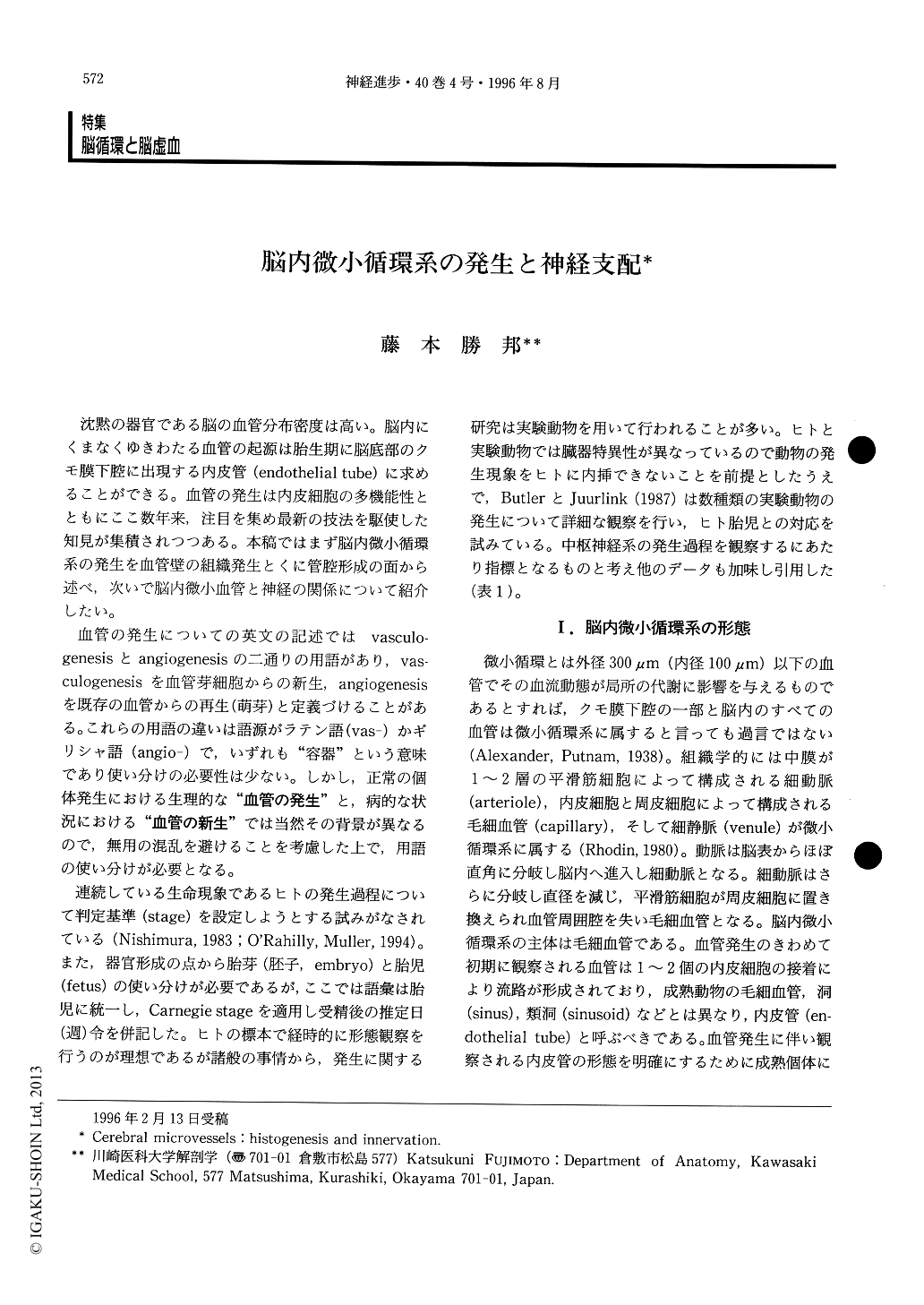Japanese
English
- 有料閲覧
- Abstract 文献概要
- 1ページ目 Look Inside
沈黙の器官である脳の血管分布密度は高い。脳内にくまなくゆきわたる血管の起源は胎生期に脳底部のクモ膜下腔に出現する内皮管(endothelial tube)に求めることができる。血管の発生は内皮細胞の多機能性とともにここ数年来,注目を集め最新の技法を駆使した知見が集積されつつある。本稿ではまず脳内微小循環系の発生を血管壁の組織発生とくに管腔形成の面から述べ,次いで脳内微小血管と神経の関係について紹介したい。
血管の発生についての英文の記述ではvasculogenesisとangiogenesisの二通りの用語があり,vasculogenesisを血管芽細胞からの新生,angiogenesisを既存の血管からの再生(萌芽)と定義づけることがある。これらの用語の違いは語源がラテン語(vas-)かギリシャ語(angio-)で,いずれも“容器”という意味であり使い分けの必要性は少ない。しかし,正常の個体発生における生理的な“血管の発生”と,病的な状況における“血管の新生”では当然その背景が異なるので,無用の混乱を避けることを考慮した上で,用語の使い分けが必要となる。
General Features : When discussing cerebral vessels, it is important to note that they are for the most part, microvessels. That is, they are <300 μm in external diameter and indeed are usually <100 μm in internal diameter. Intracerebral arterioles are accompanied by the perivascular (Virchow-Robin) space which are essentially the extension of the subarachnoid space. The perivascular space ends just distal to the termination of the smallest arterioles where the vascular and cerebral basal lamina coalesce.

Copyright © 1996, Igaku-Shoin Ltd. All rights reserved.


